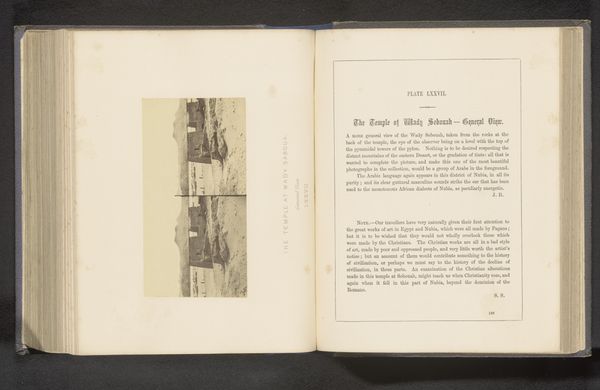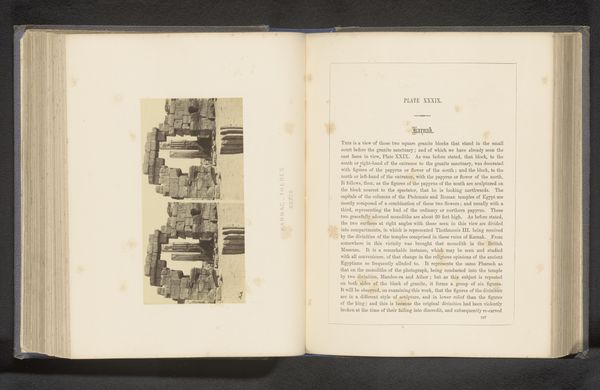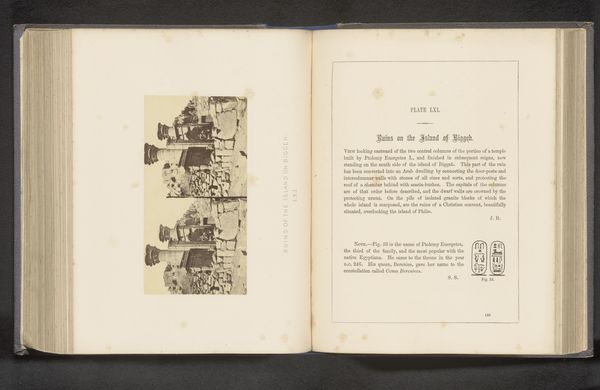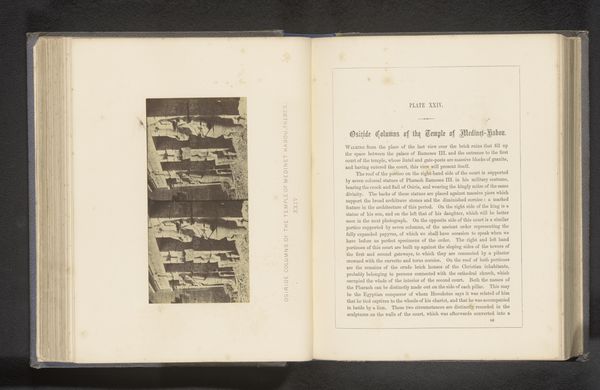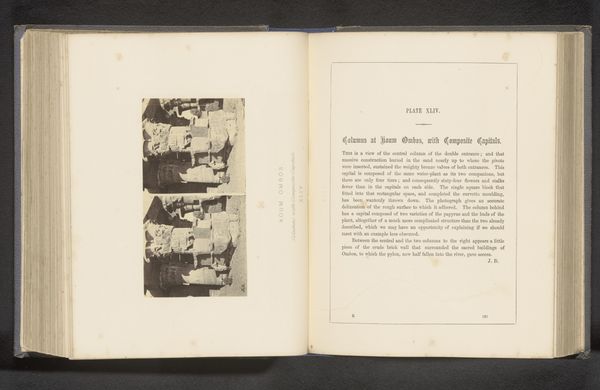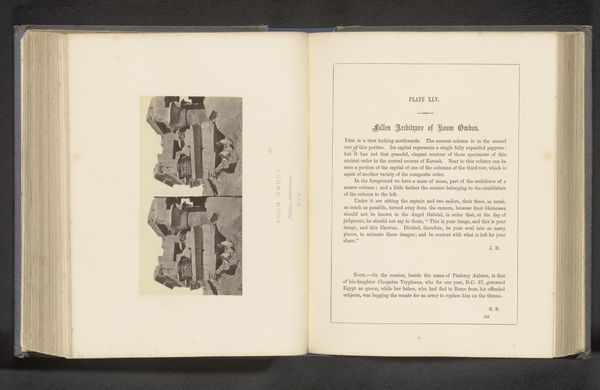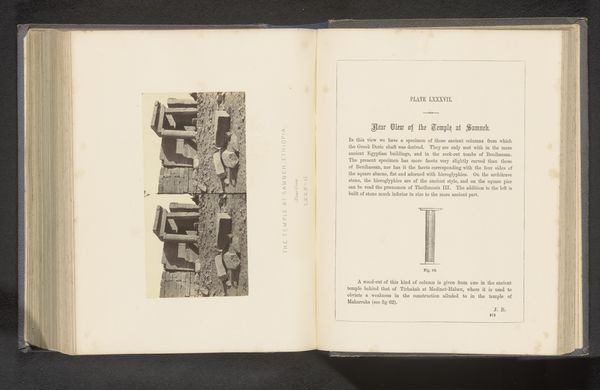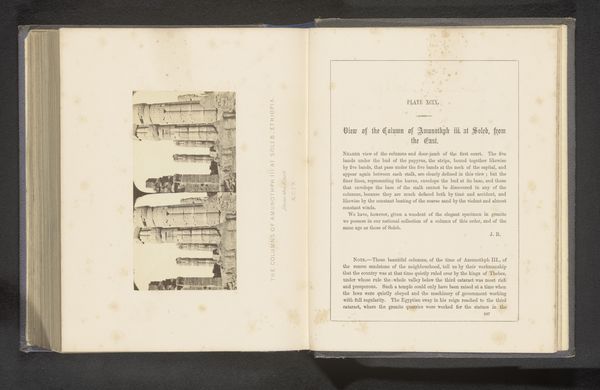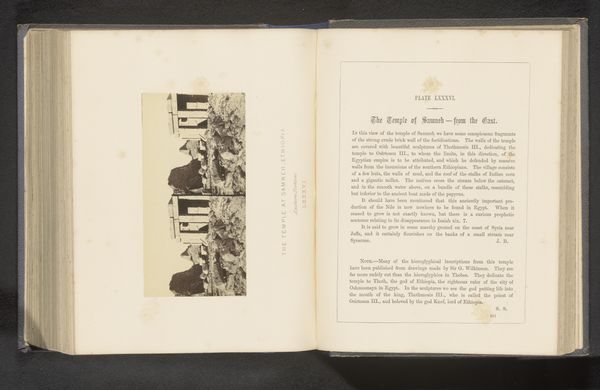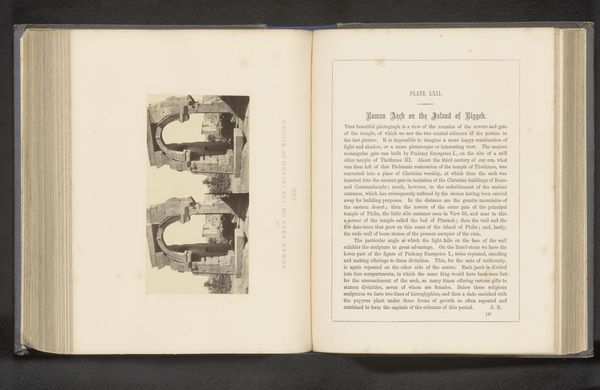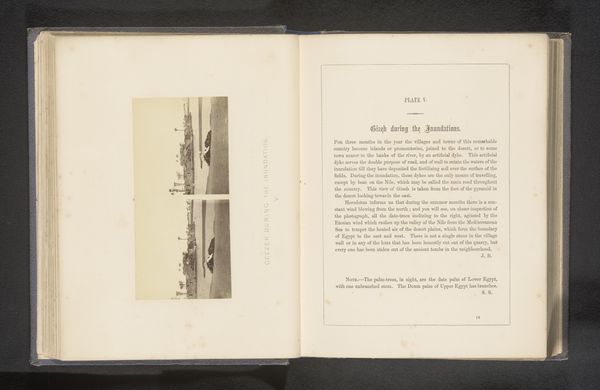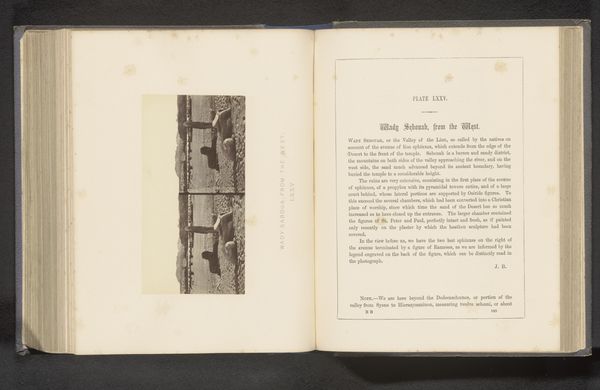
print, photography, albumen-print, architecture
# print
#
landscape
#
photography
#
ancient-mediterranean
#
orientalism
#
albumen-print
#
architecture
#
monochrome
Dimensions: height 75 mm, width 143 mm
Copyright: Rijks Museum: Open Domain
Editor: So here we have Francis Frith's albumen print, "Tempel te Semna," created before 1862. It seems to show a weathered architectural ruin. What’s striking is its stark, almost ghostly presentation. The image itself appears within the leaves of a book. What's your initial reading of this photograph? Curator: Well, seen through the lens of social history, Frith's work embodies a colonial gaze. Photography, in this era, became a powerful tool for documenting and, in a way, possessing distant lands. Think about the market for these images; were they intended for scientific study or for reinforcing Europe's perceived dominance? Editor: So the photograph functions not just as documentation, but almost as a symbol of power? Curator: Precisely. Consider how Frith frames the temple: ruined, aged, suggesting a civilization past its prime. This can be read as subtly legitimizing European intervention in these regions. Do you think that an emphasis on decay, real or perceived, influenced public opinion back home? Editor: It seems that could well be the case. Showing the temple as crumbling makes it seem like someone needs to step in and manage it; that there’s almost a responsibility. Curator: Exactly. The selection, framing and distribution of these photographs all contribute to a narrative. Now, thinking about this work being contained within an album, does that alter its perceived purpose and impact, as compared to if it were a larger standalone print exhibited on a wall? Editor: That's an interesting point. Within a book, it’s almost like a contained, controlled piece of history. It seems less immediate somehow, like a record to be studied, almost archived away. Curator: And that act of archiving is also a political act, isn’t it? Whose version of history gets preserved and presented? This piece offers us an insight not only to the Temple at Semna, but also into the era that produced and consumed its image. Editor: Absolutely. It really makes you think about the stories that these images tell, and, importantly, who gets to tell them. I will definitely look differently now when looking at works of art!
Comments
No comments
Be the first to comment and join the conversation on the ultimate creative platform.
